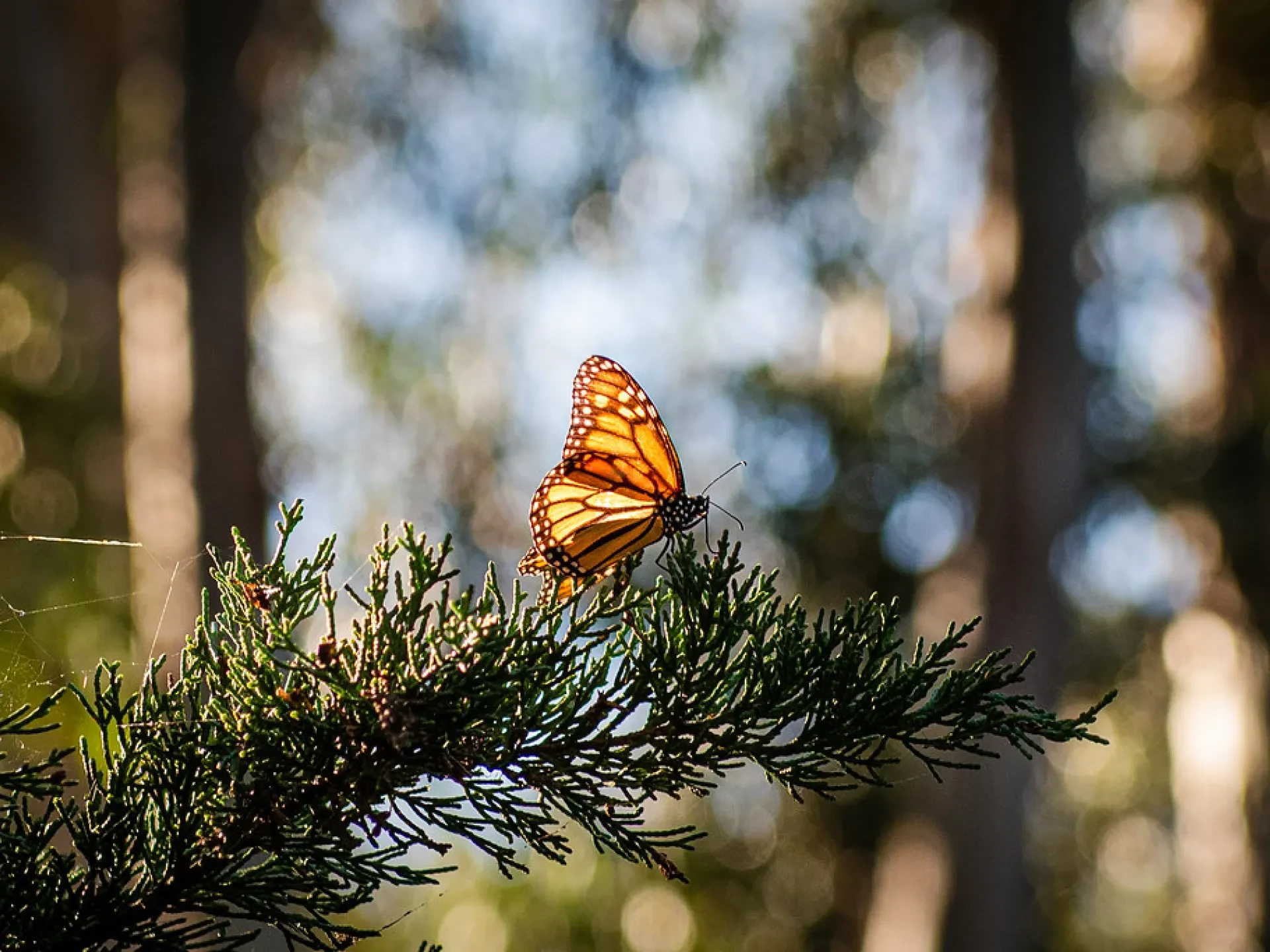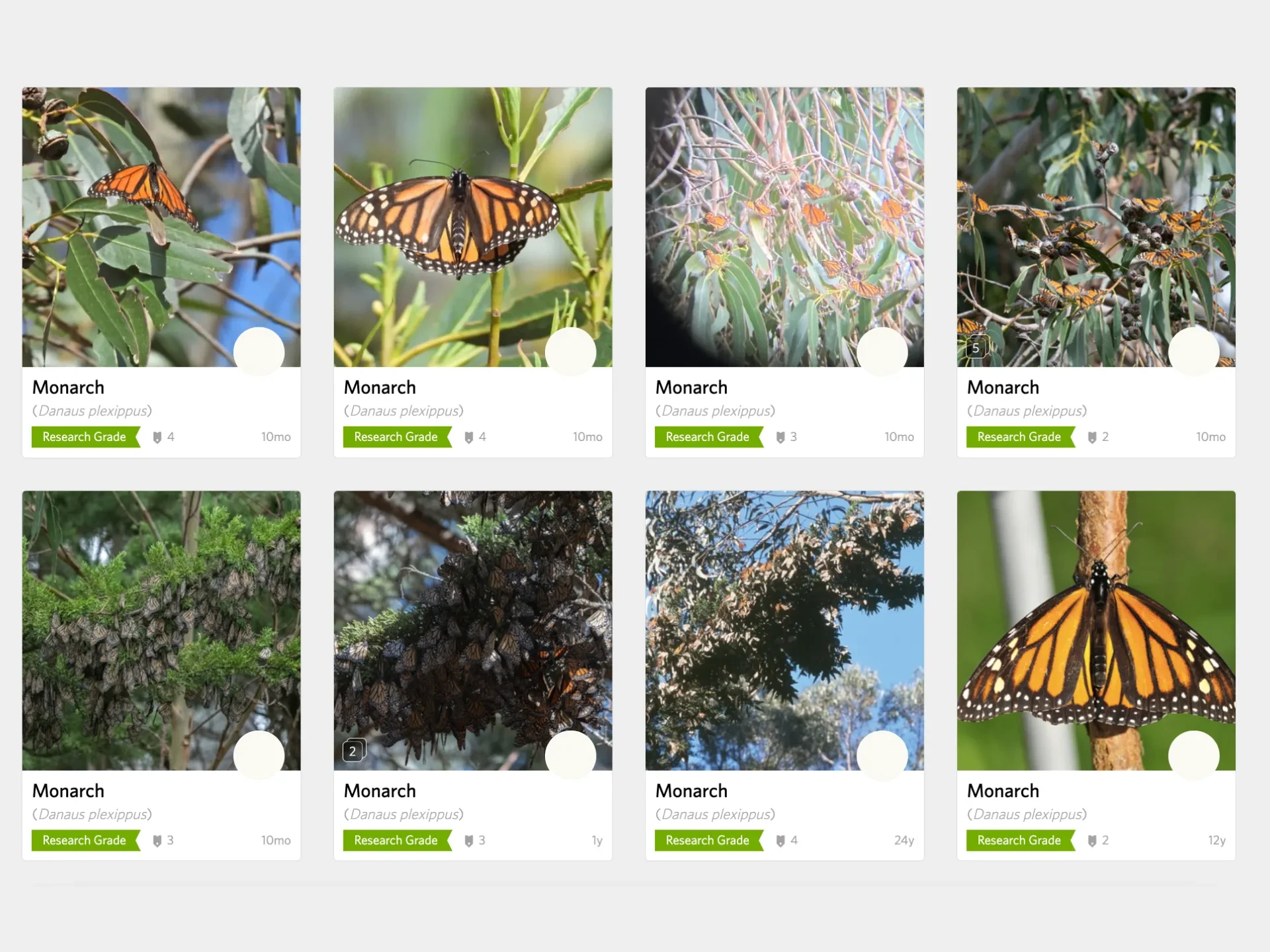It's that magical time of year again—western monarch butterflies are returning to California!
Every year in the late fall, these brilliant flyers end their annual migration at special groves on the California coast, where they take shelter for the winter. These overwintering sites provide the specific microclimate that monarchs’ need to survive the season — including shelter from the cold, dappled sunlight, and ample nectar sources — before the butterflies disperse in the spring.
Western monarch butterflies used to number in the millions. However, their population has plummeted in recent decades due to habitat loss, pesticide use, predators, disease, and increasing climate change. To track the health of the western monarch butterfly population, conservation organizations, scientists, and community members have been working together since the 1990s to count how many monarchs return to California every year. Known as the Western Monarch Count, this extraordinary effort helps inform and shape conservation projects.



